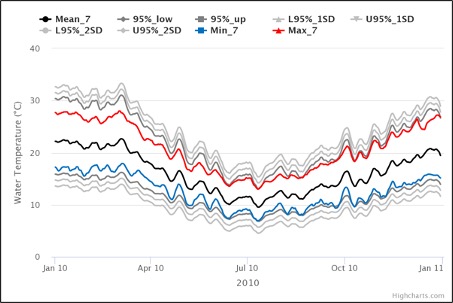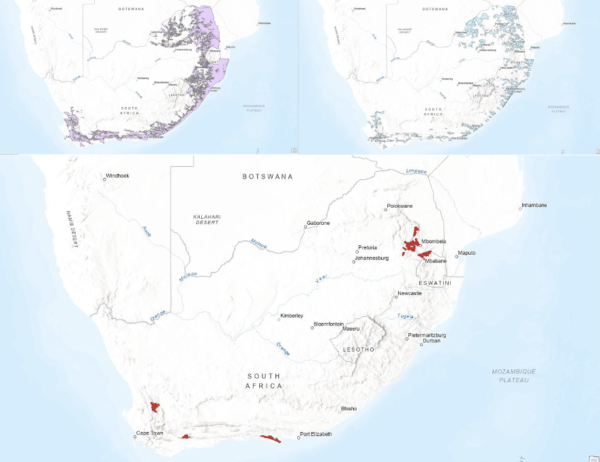The Freshwater Biodiversity Information System (FBIS) is a powerful, visual, data-rich information system for Southern African rivers and wetlands, serving over half a million biodiversity records for South Africa and surrounding regions (https://freshwaterbiodiversity.org/).
The project, funded by the JRS Biodiversity Foundation, and hosted by the Freshwater Research Centre (FRC) celebrates the following developments:
1. A new thermal module for FBIS – unlocking water temperature time series data for South Africa
A new thermal module has been developed in FBIS which will improve our ability to track climate change impacts on South Africa’s freshwater ecosystems, and manage them accordingly. This is based on water temperature guidelines for perennial rivers in South Africa, developed by FRC as part of a Water Research Commission funded project.
These data are now at the fingertips of freshwater decision-makers, conservation planners, research scientists and environmental consultants.

2. Data from FBIS give teeth to Environmental Impact Assessments in South Africa
The Department of Forestry, Fisheries and the Environment (DFFE) has developed a National web-based Environmental Screening Tool to improve the transparency and efficiency of Environmental Impact Assessments (EIAs) for South Africa. The tool uses spatial layers (including various biodiversity-based layers) to trigger different kinds of responses/assessments to proposed developments within a particular area. One of the main applications of the tool is the up-front exclusion of developments in areas of very high biodiversity sensitivity, or unbiased expert-led surveys in areas of high or moderate sensitivity.
Until recently, the tool included only terrestrial biodiversity data. In 2021, data from the FBIS platform were used to develop the first spatial layers for freshwater biodiversity: nearly 7000 freshwater fish records were harvested from the FBIS, checked by freshwater fish experts, and converted into ‘fish sensitivity layers’ which are now in the process of being incorporated into the tool.
This is a collaborative effort between the Freshwater Research Centre, the South African Institute for Aquatic Biodiversity and the Endangered Wildlife Trust, and is one of 5 decision-support frameworks in South Africa that the FBIS will be supporting over the next three years.

3. FBIS improves access to South African anuran data
Anurans (frogs and toads) are among the most threatened animals in South Africa, but limited access to data on anuran distributions has held back efforts to conserve anuran species and their habitats.

In an effort to improve access to South Africa’s anuran data, a new anuran module has been developed within the FBIS which to date serves over 37,000 records for the country’s frogs and toads. The data served thus far include data from GBIF and the Biodiversity and Development Institute (BDI) Virtual Museum. The next phase will be to upload additional data collated by the South African Institute for Aquatic Biodiversity and the Endangered Wildlife Trust.

